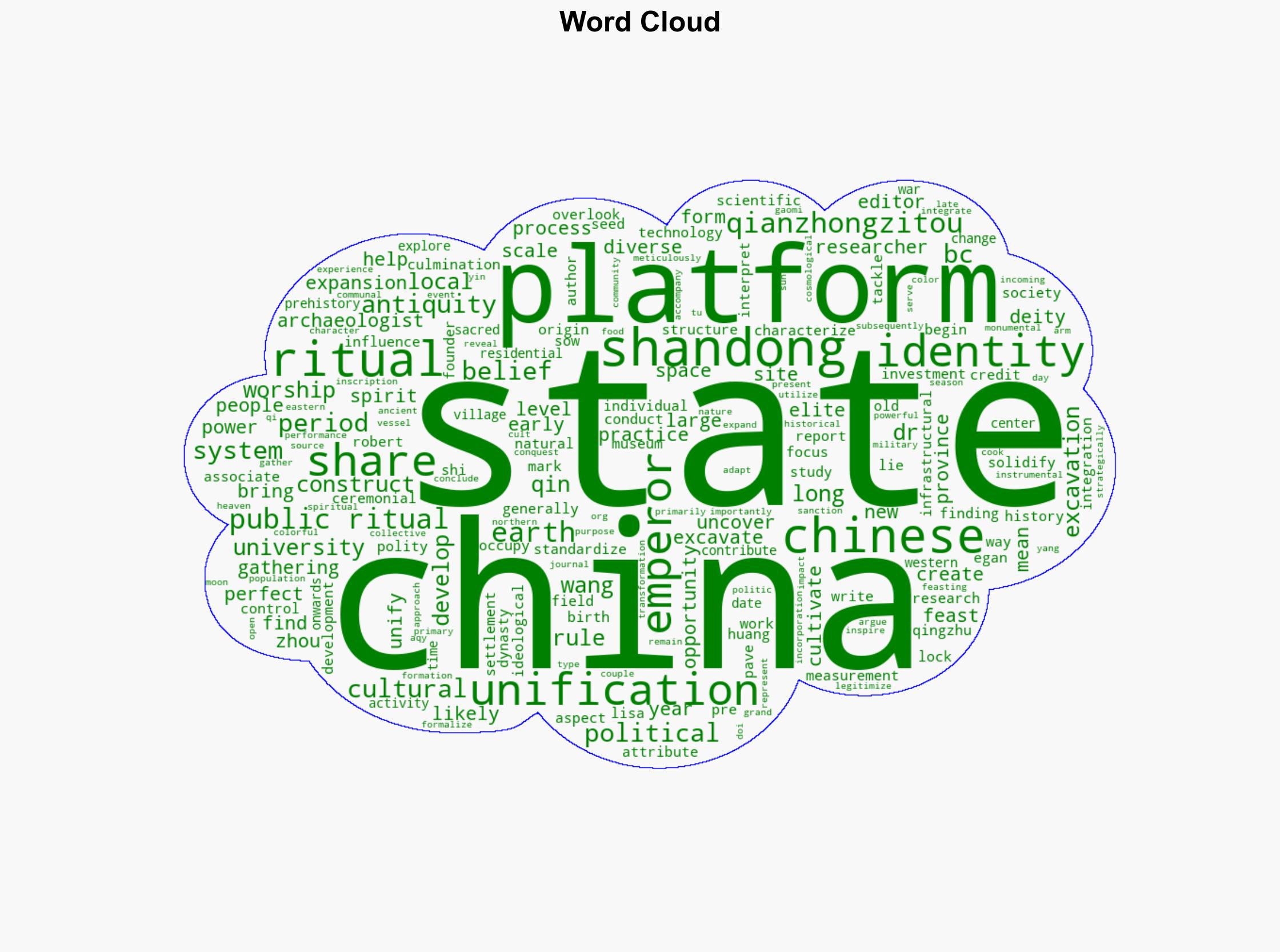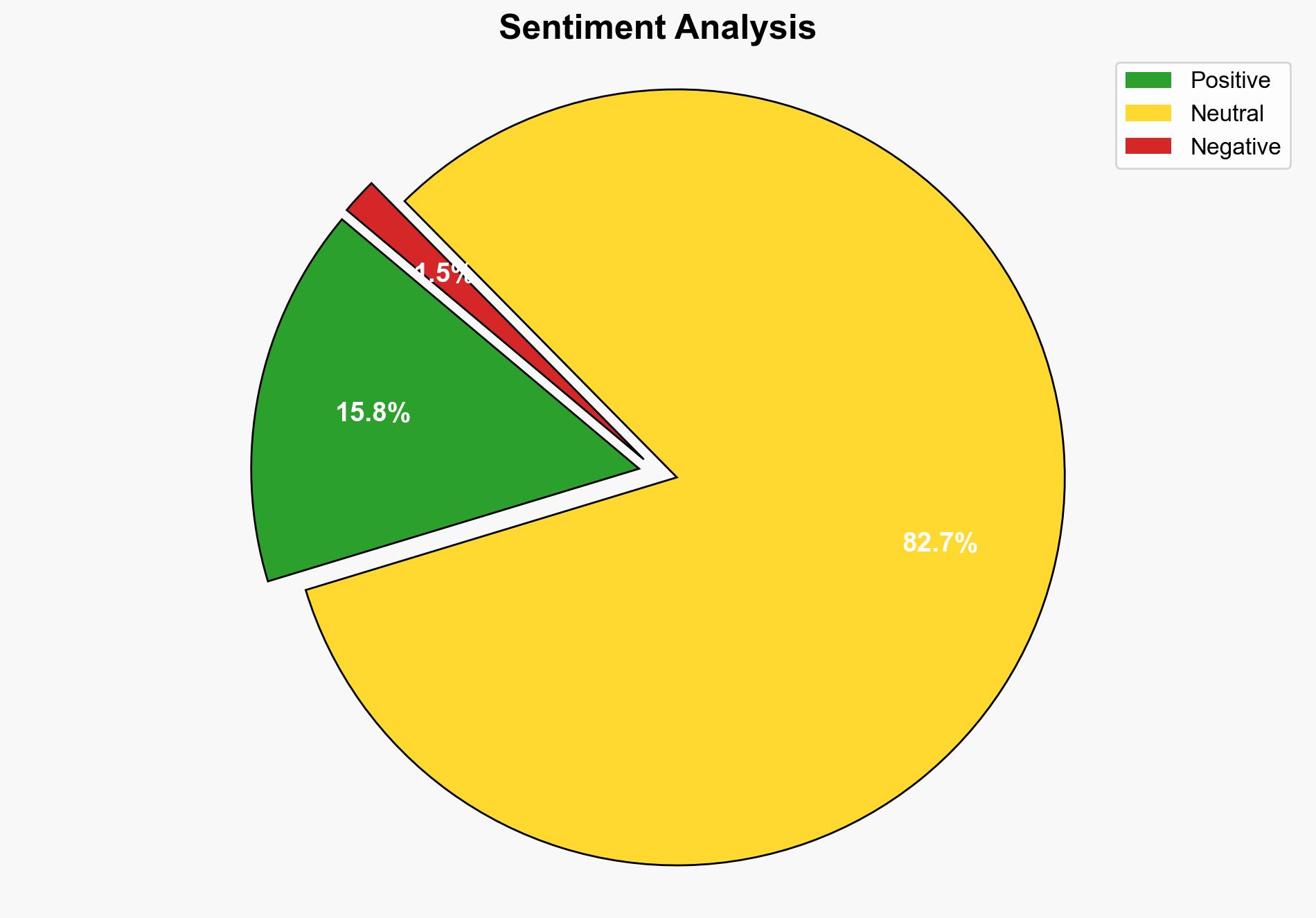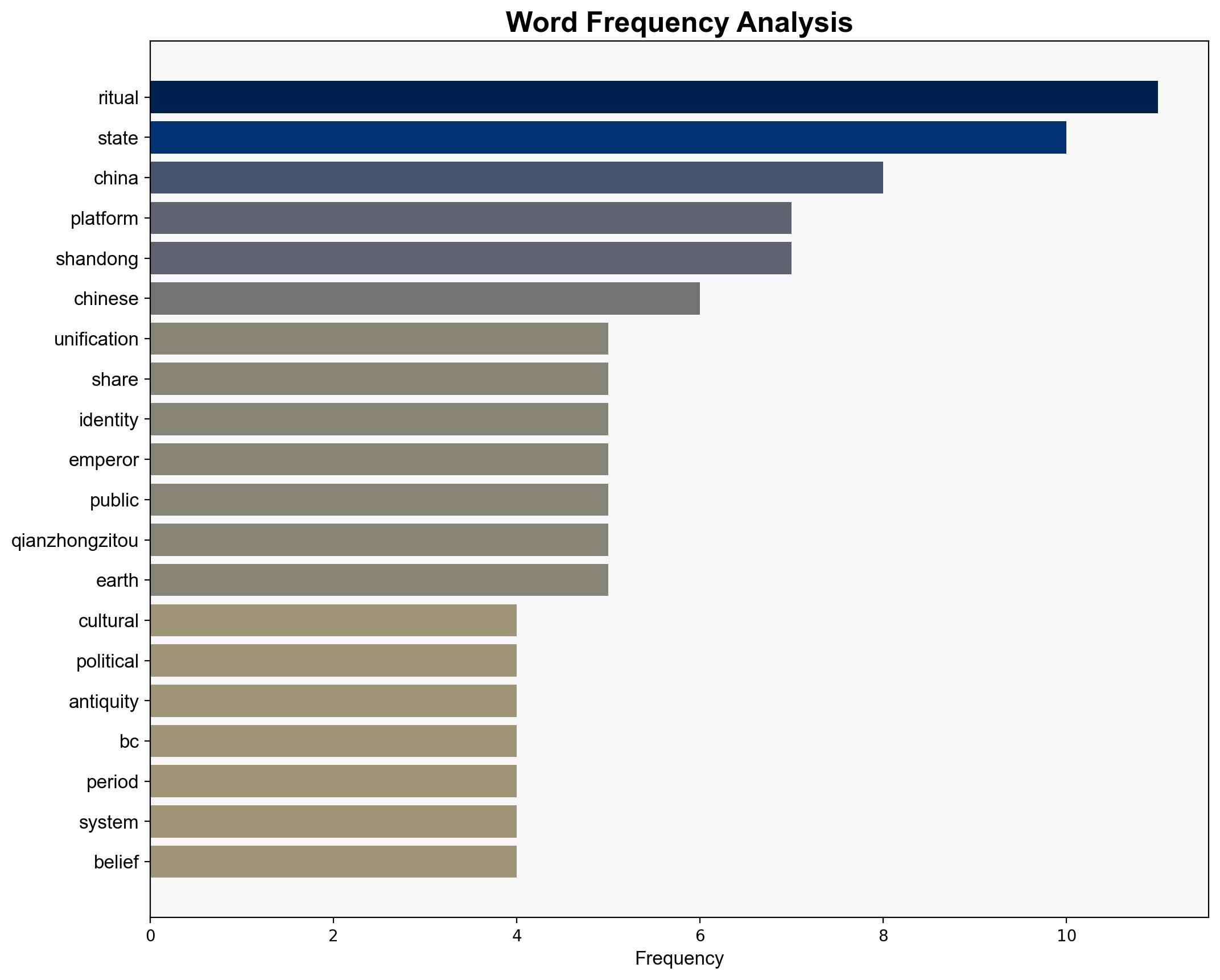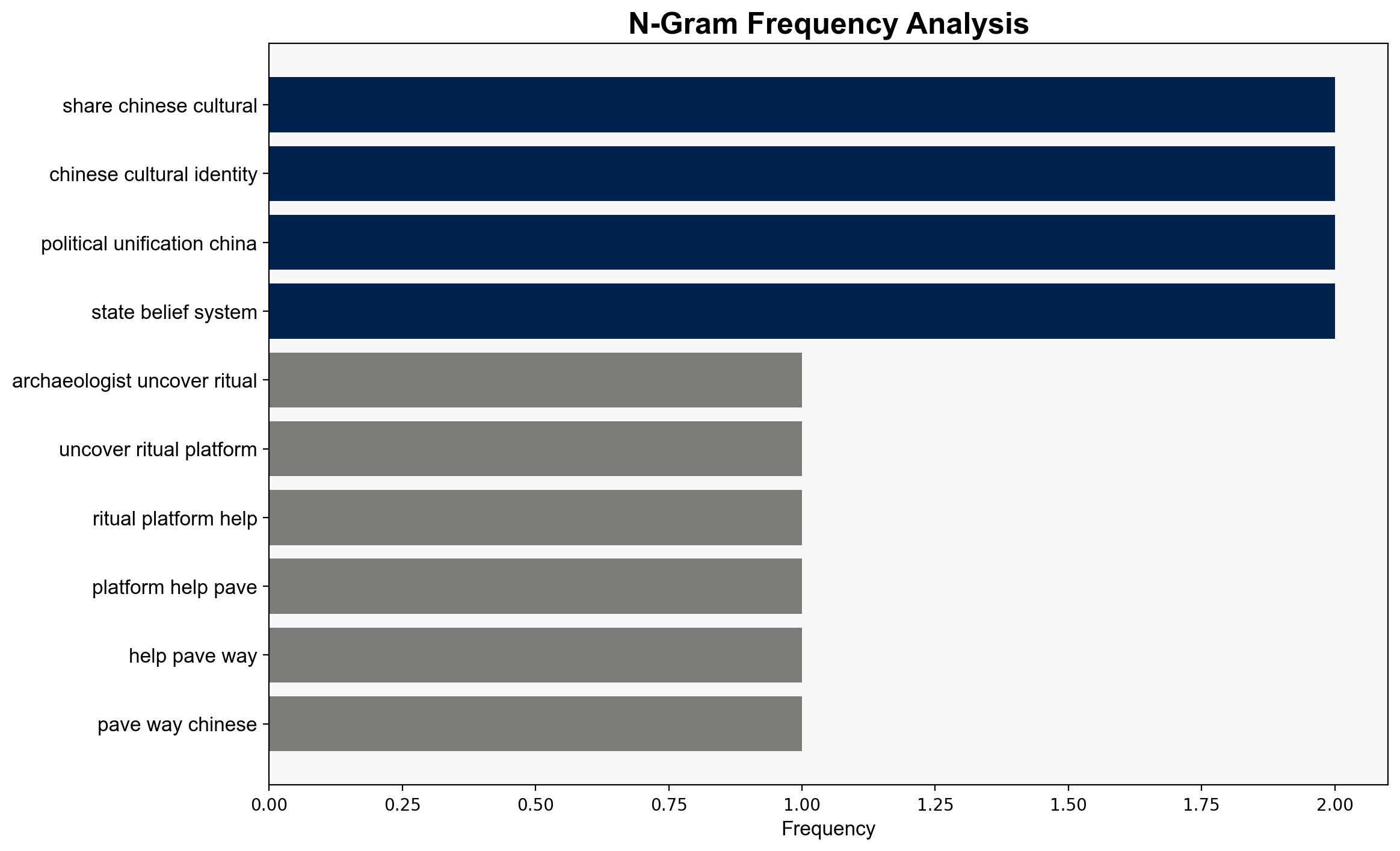Archaeologists uncover ritual platforms that helped pave the way for Chinese unification – Phys.Org
Published on: 2025-10-07
Intelligence Report: Archaeologists uncover ritual platforms that helped pave the way for Chinese unification – Phys.Org
1. BLUF (Bottom Line Up Front)
The most supported hypothesis is that ritual platforms in ancient China played a significant role in fostering a shared cultural identity, which facilitated political unification. This hypothesis is supported by archaeological evidence and historical analysis. Confidence in this conclusion is moderate due to the reliance on interpretations of archaeological findings. Recommended action includes further interdisciplinary research to validate these findings and explore their implications for understanding cultural integration processes.
2. Competing Hypotheses
1. **Hypothesis A**: Ritual platforms were central to creating a shared cultural identity that paved the way for Chinese unification. This hypothesis suggests that these platforms were used for public rituals that integrated diverse communities, fostering a collective identity that facilitated political cohesion.
2. **Hypothesis B**: The platforms were primarily local religious sites with limited impact on broader political unification. This hypothesis posits that while these sites were important for local communities, their influence on the unification process was minimal compared to military and political strategies.
Using the Analysis of Competing Hypotheses (ACH) 2.0, Hypothesis A is better supported due to the convergence of archaeological evidence indicating large-scale public rituals and historical accounts of cultural integration preceding political unification.
3. Key Assumptions and Red Flags
– **Assumptions**: Hypothesis A assumes that cultural rituals directly influenced political structures. Hypothesis B assumes that political unification was primarily driven by military conquest and centralized governance.
– **Red Flags**: Lack of direct evidence linking specific rituals to political outcomes. Potential bias in interpreting archaeological findings to fit historical narratives.
– **Blind Spots**: Limited exploration of alternative cultural influences beyond ritual platforms.
4. Implications and Strategic Risks
The findings suggest that cultural integration can precede and facilitate political unification, offering insights into modern nation-building strategies. However, over-reliance on cultural explanations may overlook other critical factors such as economic and military influences. The risk lies in misinterpreting the role of culture in political processes, potentially leading to flawed policy decisions.
5. Recommendations and Outlook
- Conduct interdisciplinary studies combining archaeology, history, and political science to validate the role of cultural rituals in political unification.
- Scenario Projections:
- **Best Case**: Further research confirms the significant role of cultural rituals, enhancing understanding of cultural integration in nation-building.
- **Worst Case**: Overemphasis on cultural factors leads to neglect of other critical unification drivers, skewing historical interpretations.
- **Most Likely**: A nuanced understanding emerges, recognizing the interplay of cultural, economic, and political factors in unification.
6. Key Individuals and Entities
– Lisa Lock
– Robert Egan
– Dr. Qingzhu Wang
7. Thematic Tags
cultural integration, historical analysis, political unification, archaeological findings





